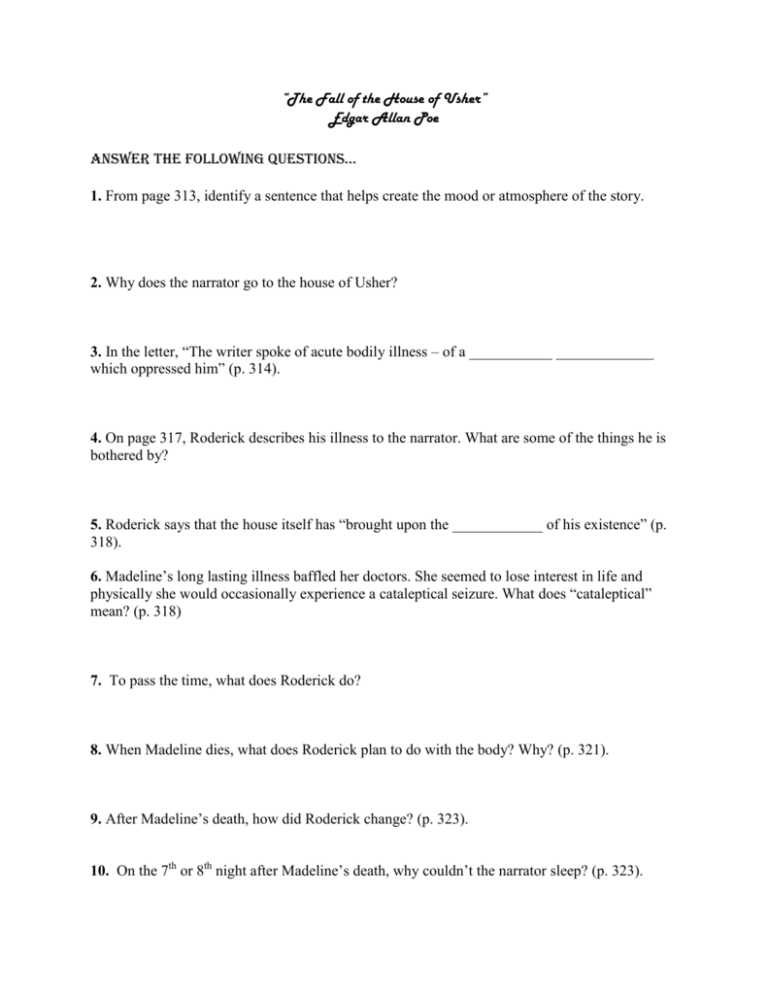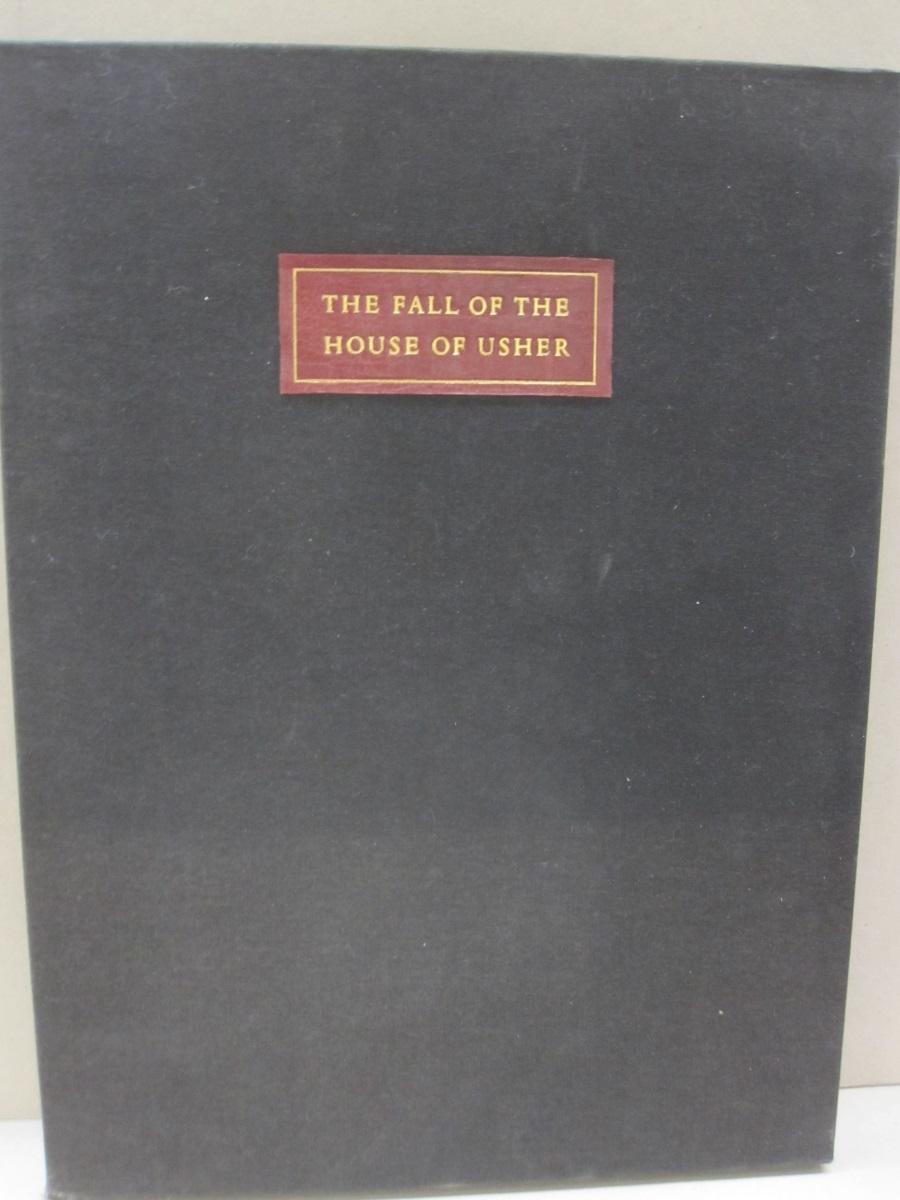Table Of Content

Lenore herself takes her name from a Poe poem about "the queenliest" young lady who has just passed. Two catchy, musical Poe poems appear briefly in "The Fall of the House of Usher" to portend doom for Roderick and Madeline. At one point, the former asks the latter if she hears bells, a question that's troubling even in a version of the world without Edgar Allan Poe like this one. Poe's poem "The Bells" starts off like a peppy song but evolves into something darker, reflecting the journey through life towards death. Like so many of his other works, it's also focused on the idea of a persistent noise capable of driving a narrator to distraction.
The Masque of the Red Death
In an epically effed-up death sequence, Freddie is forced to experience the feeling of helplessness he's been making his wife feel as the building falls down around him and a sharp piece of debris catches on some cords to form a swinging pendulum. The narrator sees Roderick losing his sanity and grip on reality, and whilethere is no obvious cause, the narrator admits he feels the same terror andmadness setting on him. Roderick lives in a constant state of fear, which sooninfects the narrator, making him superstitious as well.
Characters:
American author Edgar Allan Poe wrote the Gothic short story “The Fall of the House of Usher” in 1839. It first appeared in Burton’s Gentleman’s Magazine published in 1839 and in Poe’s collection of short stories Tales of the Grotesque and Arabesque in 1840. Poe is considered one of the founders of Gothic and Romantic literature in the United States. He is best known for his poetry and short stories, which treat themes of mystery, ill-fated love, madness, the macabre, and the supernatural. Auguste Dupin, who appears in “The Murders in the Rue Morgue” (1841), “The Purloined Letter” (1845),” and “The Mystery of Marie Roget” (1845).

The Black Cat
A television adaptation was produced by ATV for the ITV network in 1966 for the horror anthology series Mystery and Imagination. Roderick and Madeline are twins and the two share an incommunicable connection that critics conclude may be either incestuous or metaphysical,[7] as two individuals in an extra-sensory relationship embodying a single entity. To that end, Roderick's deteriorating condition speeds his own torment and eventual death.
Poe lived in Philadelphia for 6 years.
Uncanny events—such as Madeline’s reanimation—push Roderick andthe narrator further into madness, forcing them to reconsider their sanity. Inaddition, the possible sentience of the house only drives its residents insanewith fear, showing how the supernatural decays what it touches. On a stormy autumn (with an implied pun on the word fall?) evening, a traveler—an outsider, like the reader—rides up to the Usher mansion. This traveler, also the first-person narrator and boyhood friend of Roderick Usher, the owner of the house, has arrived in response to a summons from Usher.
On the other hand, there are plenty of strange things about the Usher family. For one, “the entire family lay in the direct line of descent,” meaning that only one son from each generation survived and reproduced. Poe implies incestuous relations sustained the genetic line and that Roderick and Madeline are the products of extensive intermarriage within the Usher family. ‘The Fall of the House of Usher’ can also be analysed as a deeply telling autobiographical portrait, in which Roderick Usher represents, or reflects, Poe himself.
James J. Walker Park, Formerly St. John’s Cemetery
During this time, Poe finished his only novel, “The Narrative of Arthur Gordon Pym,” which was released in 1838. On April 6, 1844, hoping to secure a backer for his own literary magazine, Poe left Philadelphia for New York. Once he left the City of Brotherly Love, Poe's life spiraled out of control. Though "The Raven," published in New York, brought him tremendous acclaim, the poverty and drunkenness which dogged him his entire life finally got the best of him.
Literary Theory and Criticism
Even with the help of a new and influential friend, lawyer and writer John Pendleton Kennedy, Poe was mostly unsuccessful. His hopes for financial security became even more desperate in 1834 when John Allan died, leaving him out of his will. Kennedy finally succeeded in getting the Southern Literary Messenger to publish several of Poe’s stories and to offer Poe the job of editor, a position that he kept from 1835 to 1837. During this time, Poe published stories and poems in the Southern Literary Messenger. It was, however, with his extensive publication of criticism that he began to make his mark in American letters. Charity”offered “of late” by the Ushers (presumably by Roderick himself because thestory takes place in the nineteenth century, when men, according to tradition,were in charge of financial affairs).
That figure is taken directly from the Poe story that gives the episode its title, 1842's "The Masque of the Red Death." This story, too, features a powerful man named Prospero whose exclusive party is crashed by a lady in a corpse mask who leads to their deaths. In the case of Poe's story, though, Prospero throws the party in the midst of a plague — he's basically a one-percenter breaking quarantine rules. The plague itself causes horrific symptoms including bleeding from the pores, and the woman who arrives at the party is meant to be the illness personified. After Prospero confronts her, he dies, and his party guests also end up slain — by the Red Death they could've avoided if they'd just stayed home. Inkeeping with the gothic style, Poe depicts the supernatural as evil and relatesit to insanity.
The Fall Of The House Of Usher Ending & Meaning Explained - Screen Rant
The Fall Of The House Of Usher Ending & Meaning Explained.
Posted: Sat, 20 Apr 2024 07:00:00 GMT [source]
He paints a dark underground tunnel with beams ofstrange light shining through. Usher writes songs on his guitar, and thenarrator recounts one entitled “The Haunted Palace.” In the song a prosperouspalace falls, and only dancing ghosts remain. Roderick admits he believes theUsher house is sentient and that a foul atmosphere grows from the grounds. Hestates that the house has moulded generations of the Usher family and hascaused his current state. Roderick decides to keep his sister preserved in ahouse vault before moving her to the isolated family cemetery.
The narrator and Roderick place her in a tomb despite her flushed, lively appearance. In the tale's conclusion, Madeline escapes from the tomb and returns to Roderick, scaring him to death. The bedroom door is then blown open to reveal Madeline, bloodied from her arduous escape from the tomb.
In 1847, a visitor to his unheated home found his ill spouse Virginia in bed covered only by both Poe's overcoat and their dear tabby Catterina. In 1849, just as he thought he had beaten his demons and found a literary backer, Poe died on the way to meet with his angel. Just like in the episode, Poe's short story of the same name features a party thrown by a character called Prospero (played in the series by Sauriyan Sapkota) which is crashed by a mysterious masked figure. Instead of contending with acid falling through overhead sprinklers, the politically influential revellers in Poe's story are the aristocracy trying to escape a plague within the privileged confines of the prince's palace — but in the end, it comes for them all. There are many overlaps in the design of Prince Prospero's party however, as Poe's tale describes many rooms for debauchery, and of course, it's a masquerade.

No comments:
Post a Comment